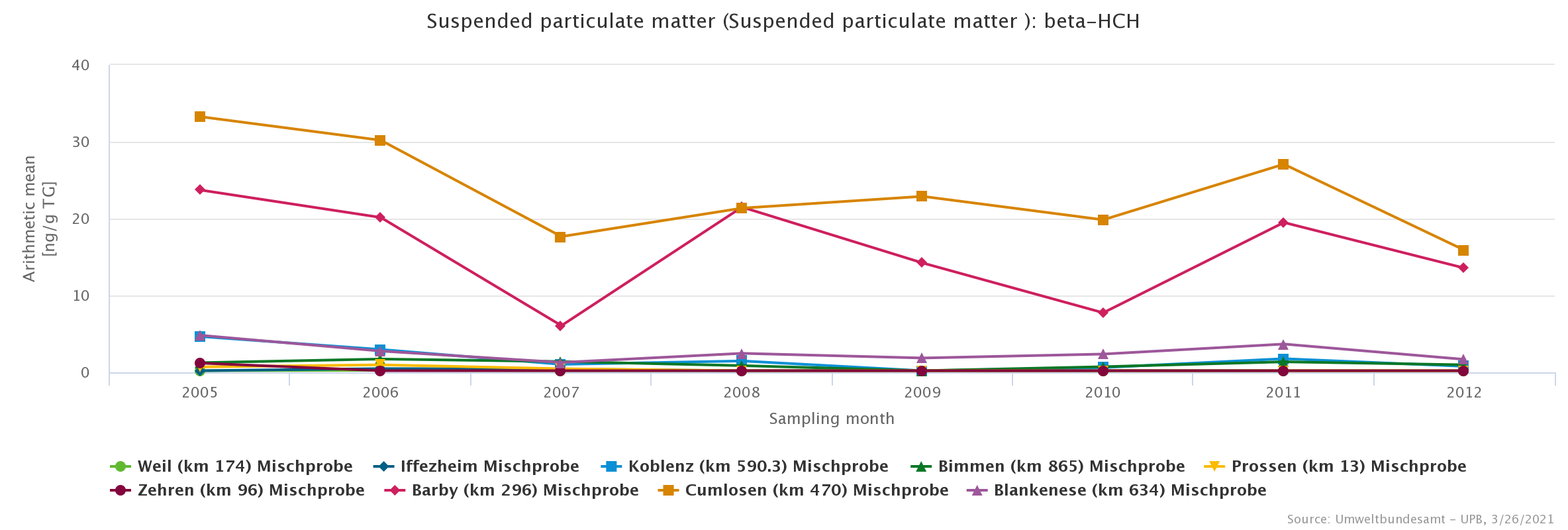beta-HCH in suspended particulate matter (SPM) from rivers Rhine and Elbe
High HCH contamination of SPM at Elbe sampling sites downstream the Mulde mouth
Beta-HCH is environmentally persistent and has a high potential for bioaccumulation. It is a by-product in lindane production and a constituent of the so called technical HCH mixture.
Technical HCH was banned in the Federal Republic of Germany already in 1977 and the lindane production stopped in the early 1980s. In contrast, in the former German Democratic Republic lindane was still produced and used extensively until the late 1980s. The main production site was the industrial region around Bitterfeld. The inappropriate deposition of the by-products alpha- and beta-HCH resulted in contamination of waterbodies and soils.
Since 2009, alpha- and beta-HCH are banned worldwide and the use of gamma-HCH (lindane) has been severely restricted.
According to the differing use and production patterns in Germany, significant differences can be observed between the HCH concentrations in SPM from rivers in West Germany and in East Germany.
In the river Rhine, beta-HCH levels in SPM are generally low. The same is true for the Elbe sampling sites Prossen and Zehren. In the river Elbe downstream of the Mulde mouth, however, a dramatic increase in beta HCH is noticeable. This is mainly related to inputs from the Mulde which flows through the Bitterfeld region. Levels decrease again at the sampling site Blankenese which may be explained by dilution effects with North Sea water.
The routinely analysis of suspended particulate matter for beta-HCH was not continued after 2012.

Updated at: 2022-01-05
Recommended profiles
Specimen
-
Fine insoluble mineral or organic particles in the water phase
Analytes
-
beta-HCHMost persistent HCH-isomer with the highest potential for biomagnification
Sampling area
-
Fourth largest river basin in Central Europe
-
Longest river in Germany